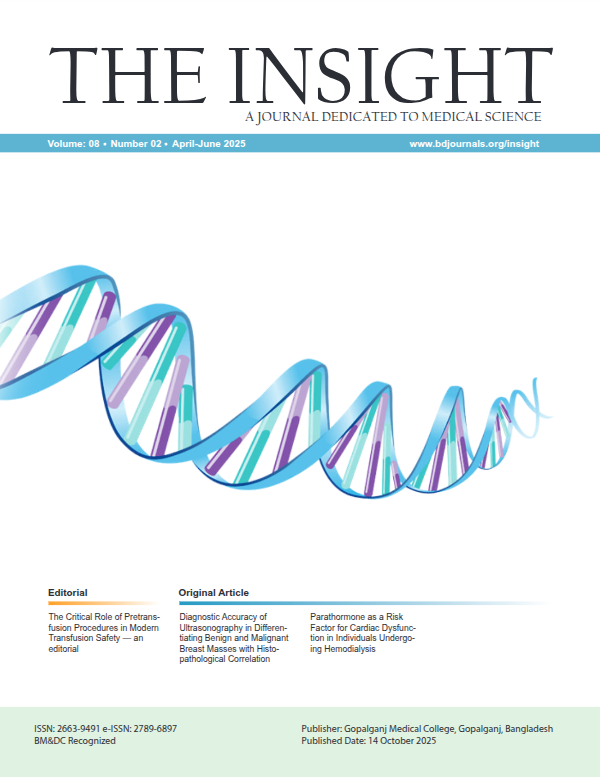Abstract
Introduction: Ectopic pregnancy (EP), the implantation of a fertilized ovum outside the uterine cavity, is a significant contributor to early pregnancy-related morbidity and mortality, particularly in low-resource settings like Bangladesh. Delayed diagnosis and restricted healthcare access contribute to poor outcomes, with tubal pregnancies being the most common. Methods and materials: This one-year cross-sectional study (January–December 2024) at Enam Medical College and Hospital, Dhaka, enrolled 80 ectopic pregnancy patients. Data on demographics, risk factors, clinical features, diagnostics, management, complications, and outcomes were collected. Ethical approval was obtained, and informed consent was secured from all participants. Results: The mean age of participants was 28.06 ± 4.70 years, with most being married (98.8%) and urban residents (97.5%). Risk factors included infertility (31.3%), abortion (15.0%), and PID (5.0%). Common symptoms were vaginal bleeding (97.5%) and abdominal pain (93.8%). USG showed an empty uterus and adnexal mass in 87.5% each, and free fluid in 68.8%. Most ectopic pregnancies were tubal (88.8%), mainly in the right tube (62.5%). Surgery was the primary treatment (83.7%), with laparotomy (62.5%) and salpingectomy (73.8%) most common, while methotrexate was used in 16.3%. Complications included ICU admission (11.3%) and one death (1.3%). Treatment type was significantly associated with outcomes (p < 0.001). Conclusion: Ectopic pregnancy remains a critical emergency in Bangladesh, with late presentations leading to higher surgical rates. Early diagnosis and access to conservative treatment options can reduce morbidity. A focus on improving diagnostic infrastructure and patient awareness is essential to improve outcomes.

This work is licensed under a Creative Commons Attribution 4.0 International License.
Copyright (c) 2025 The Insight





 PDF
PDF